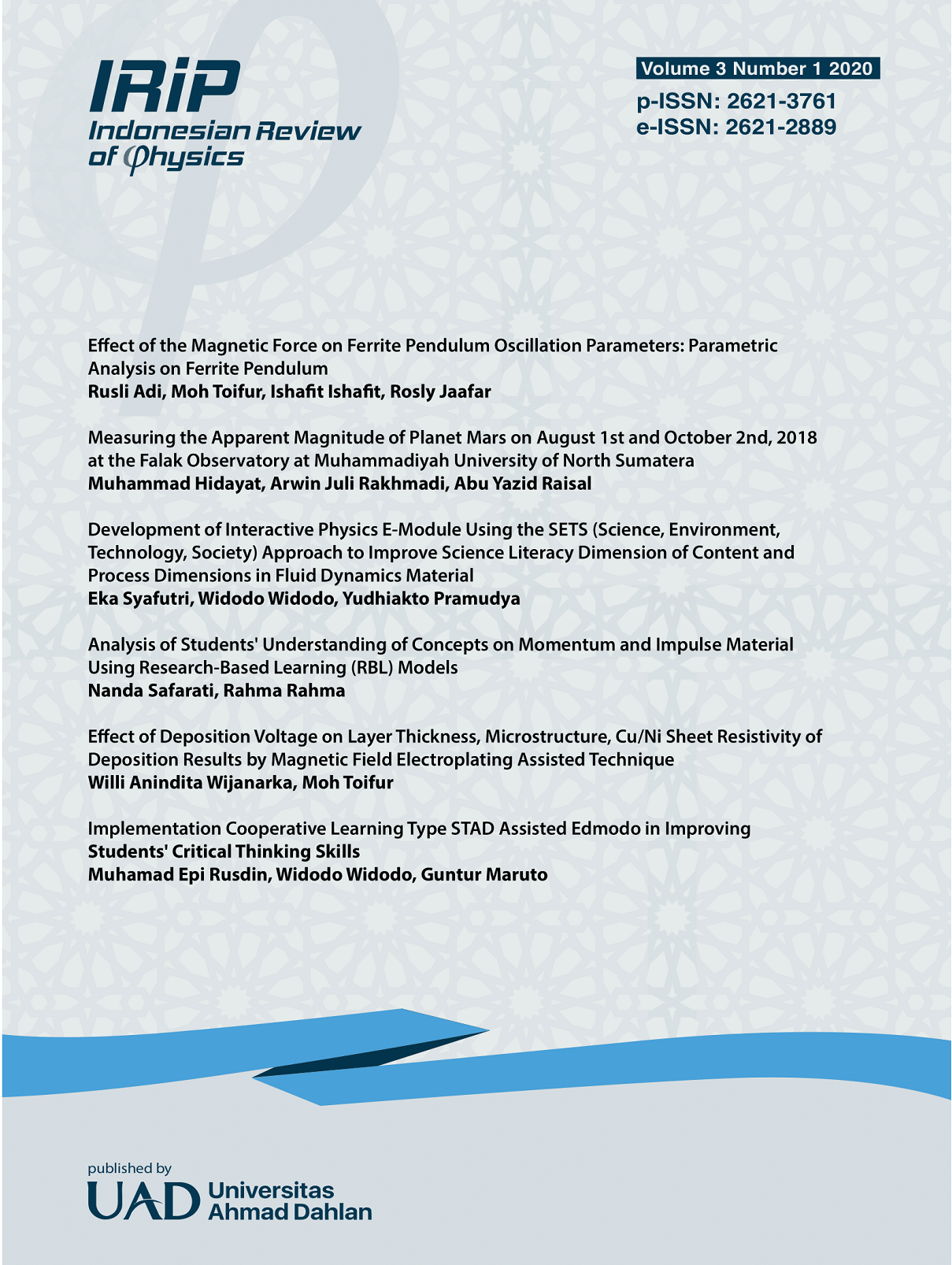Measuring the Apparent Magnitude of Planet Mars on August 1st and October 2nd, 2018 at the Falak Observatory at Muhammadiyah University of North Sumatera
DOI:
https://doi.org/10.12928/irip.v3i1.1838Keywords:
Apparent magnitude, Image processing, Iris, MarsAbstract
The Bright stars that were seen by the eyes are the received quantity of the energy flux sent from the celestial body. The energy flux is inversely proportional to the distant quadrant which means that the light of the stars that are visible to our eyes cannot be compared to the actual brightness or even weaker than the others and the visible star lights the apparent magnitude. The purpose of this study is to measure the apparent magnitude of Mars. This research methodology is quantitative, by taking number of images/videos of Mars and then the data is processed by using IRIS software. The results of the analysis is using IRIS software that shows the value of the apparent magnitude of Mars on August 1st, 2018 is (-1.56 ± 0.33) and October 2nd 2018 is (-1.84 ± 0.08). This was taken by selecting the best image result in clear night sky.
References
[2] Tanzilla R. Ishafit and Pramudya. Y., “Measurement Eccentricity the Moon’s Orbit with Image Analysis Technique by Using Tracker Software,†Indones. Rev. Phys., vol. 1, no. 1, p. 19, 2018.
[3] Hariyadi P, Astronomi Dasar. Medan: CV Prima Utama, 2016.
[4] Elizabeth A. M, Kamus Sains. Pustaka Pelajar, 2012.
[5] Constantine T, Absolute and Apparent Magnitudes. 2005.
[6] Chandra D.A, “Apparent and Absolute Magnitudes of Stars: A Simple Formula,†World Sci. News An Int. Sci. J., pp. 120–133, 2018.
[7] Hariyadi R, Ensiklopedia Astronomi Jilid 2: Planet. Jakarta: Erlangga, 2008.
[8] Rudi H.S. Putraga H., Stellarium & Google Earth. Medan: UMSU PRESS, 2018.
Downloads
Published
Issue
Section
License
Authors who publish in IRiP agree to the following terms: Authors retain copyright and grant the IRiP right of first publication with the work simultaneously licensed under a Creative Commons Attribution License (CC BY-SA 4.0) that allows others to share (copy and redistribute the material in any medium or format) and adapt (remix, transform, and build upon the material) the work for any purpose, even commercially with an acknowledgment of the work's authorship and initial publication in IRiP. Authors are able to enter into separate, additional contractual arrangements for the non-exclusive distribution of the journal's published version of the work (e.g., post it to an institutional repository or publish it in a book), with an acknowledgment of its initial publication in IRiP. Authors are permitted and encouraged to post their work online (e.g., in institutional repositories or on their website) prior to and during the submission process, as it can lead to productive exchanges, as well as earlier and greater citation of published work (See The Effect of Open Access).
















